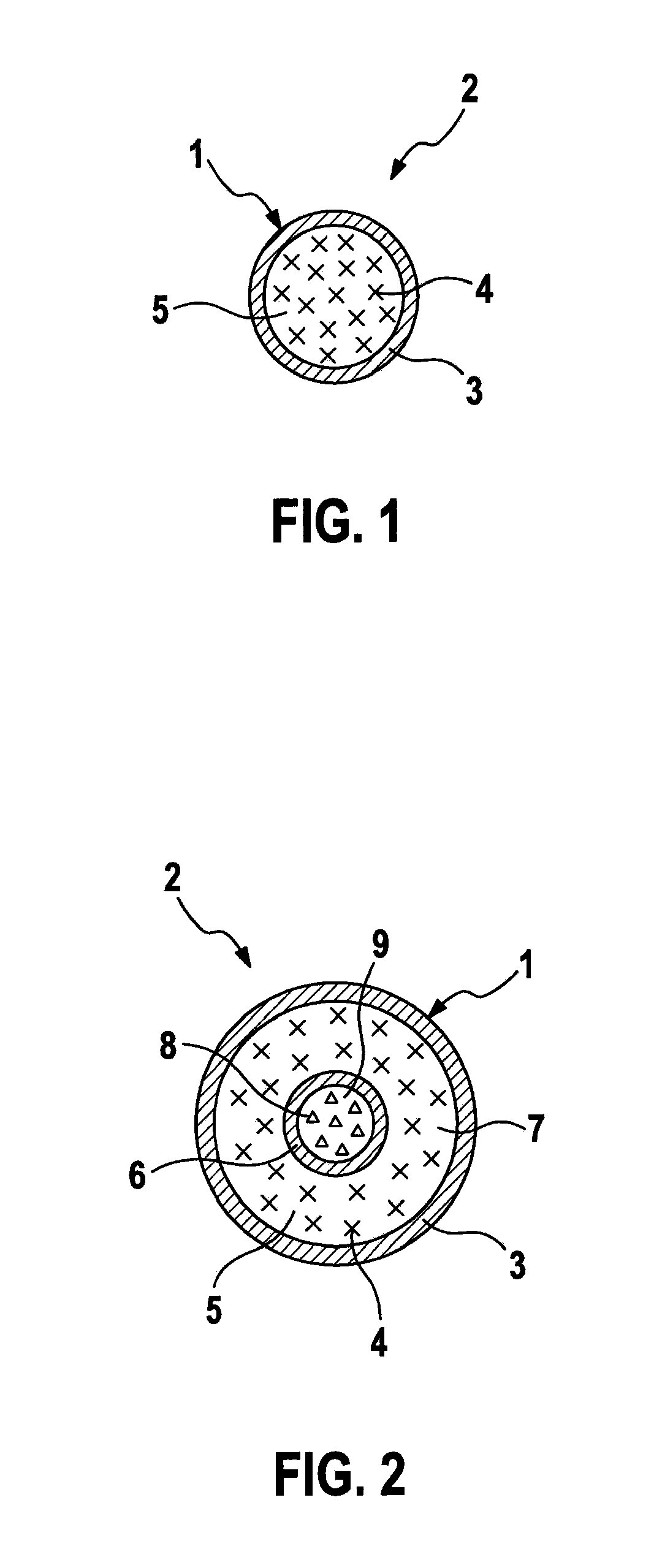Additive for an electrolyte of a lithium-based secondary battery cell
a lithium-based secondary battery cell and additive technology, which is applied in the manufacture of final products, batteries, electrochemical generators, etc., can solve the problems of no longer available additives, negative effects of electrolyte additives, etc., and achieve the suppression of aluminum corrosion, increase in oxygen solubility, and increase conductivity
- Summary
- Abstract
- Description
- Claims
- Application Information
AI Technical Summary
Benefits of technology
Problems solved by technology
Method used
Image
Examples
Embodiment Construction
[0032]FIG. 1 shows a schematic diagram of one exemplary embodiment of an additive unit 1 for an additive 2 according to the present invention for an electrolyte (not shown) of a lithium-based secondary battery cell (not shown). Additive unit 1 includes a closed capsule 3 which is filled with a fluid 5 containing at least one additive 4. As an alternative, instead of being filled with fluid 5 containing additive 4, capsule 3 may also be filled with a liquid additive 4 or with an additive 4 in the form of a solid. Capsule 3 is designed in coordination with additive 4, in such a way that additive 4 may be released into the environment around capsule 3 by diffusion out of capsule 3 and thus into an electrolyte around capsule 3.
[0033]FIG. 2 shows a schematic diagram of a cross section through another exemplary embodiment of an additive unit 1 for an additive 2 according to the present invention. In contrast with the exemplary embodiment shown in FIG. 1, an internal capsule 6 is situated ...
PUM
| Property | Measurement | Unit |
|---|---|---|
| temperature | aaaaa | aaaaa |
| pressure | aaaaa | aaaaa |
| electrical voltage | aaaaa | aaaaa |
Abstract
Description
Claims
Application Information
 Login to View More
Login to View More - R&D
- Intellectual Property
- Life Sciences
- Materials
- Tech Scout
- Unparalleled Data Quality
- Higher Quality Content
- 60% Fewer Hallucinations
Browse by: Latest US Patents, China's latest patents, Technical Efficacy Thesaurus, Application Domain, Technology Topic, Popular Technical Reports.
© 2025 PatSnap. All rights reserved.Legal|Privacy policy|Modern Slavery Act Transparency Statement|Sitemap|About US| Contact US: help@patsnap.com


